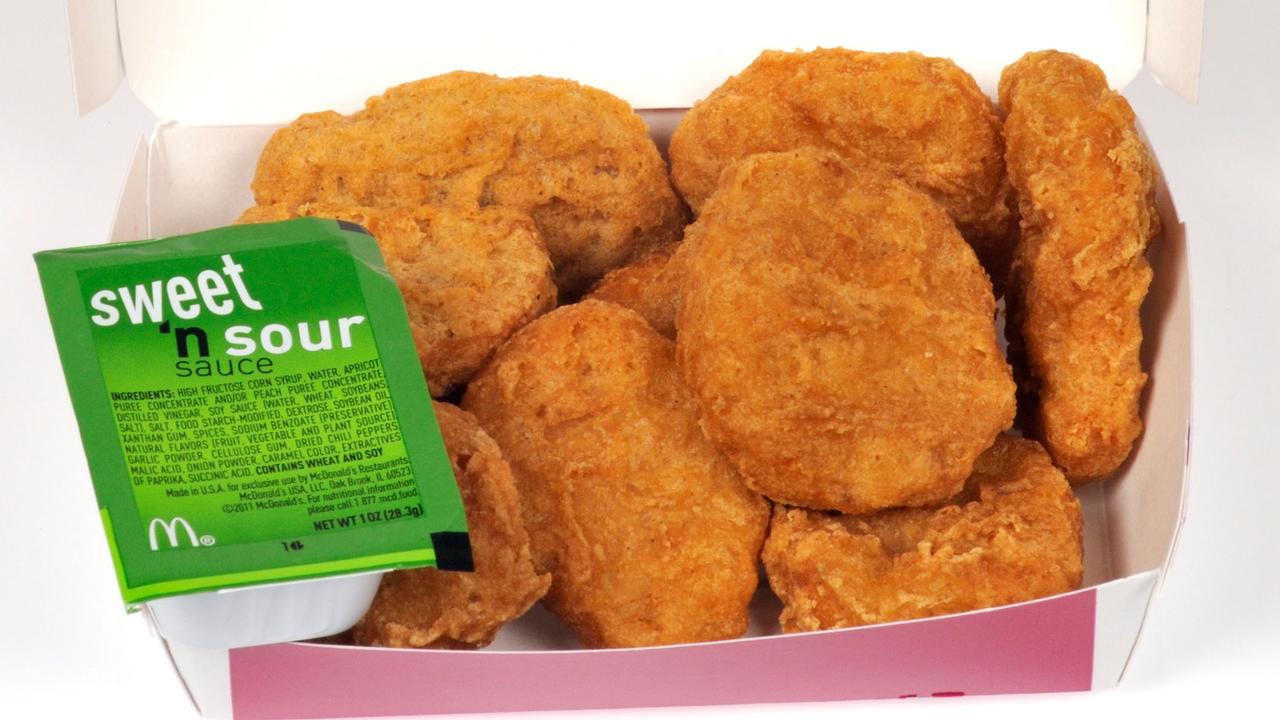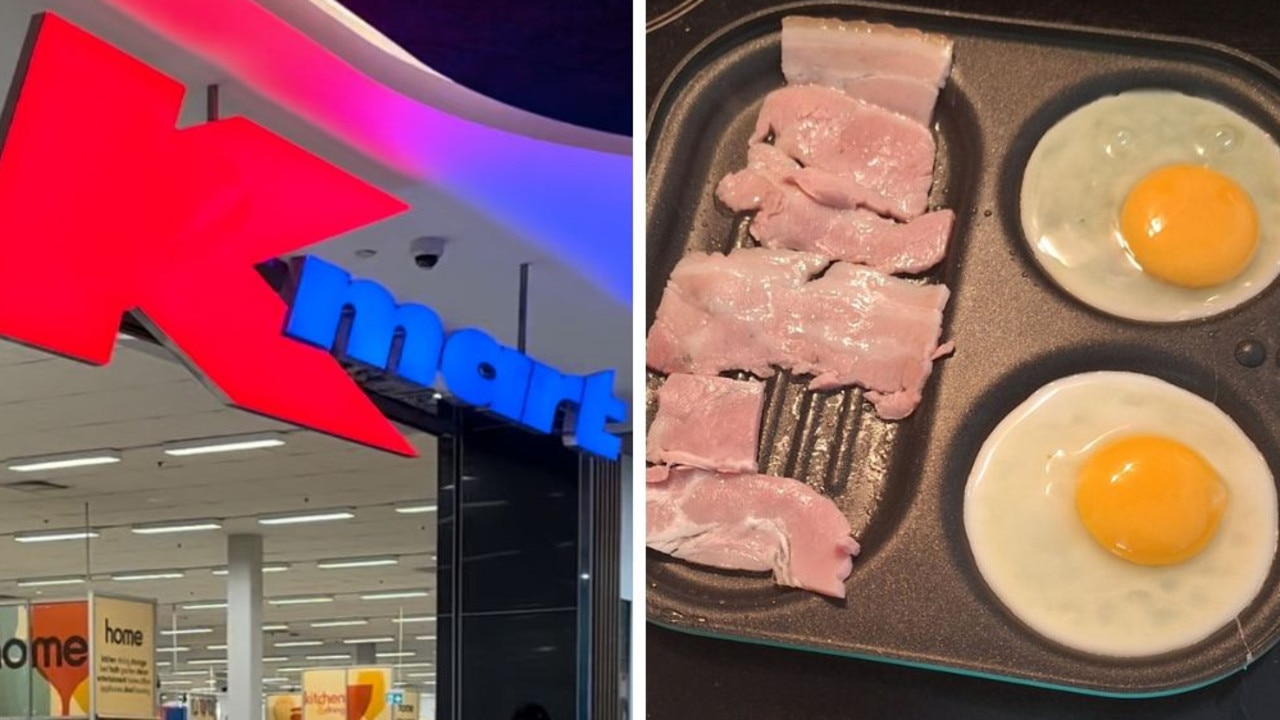Kangaroo the true-blue Australia Day BBQ choice
IT’S healthy, delicious and a true-blue choice for Australia Day barbies. But are we really over our reluctance to eat kangaroo?

THERE are plenty of legitimate contenders for a place on your barbecue this Australia Day.
Seafood lovers will be following Hoges’s lead and chucking on a prawn; a juicy steak never goes out of fashion; while a lamb chop has won even Richie Benaud’s tick of approval.
But take a closer look in your supermarket chiller and you are likely to find another red meat — one that is arguably more true-blue Australian than any of the alternatives.
Kangaroo certainly has been eaten in this country for longer than any of the farmed meats.
And while some people are understandably reticent about eating an animal that is a national symbol, there are signs this sentiment is shifting.
Kangaroo is now sold by both major supermarkets in all states and the biggest processor, Adelaide-based Macro Meats, reports an almost 500 per cent increase in sales over the past five years through its brand Gourmet Game.
Putting aside the ethical and environmental arguments on both sides, kangaroo offers consumers a meat that is exceptionally lean, tender and delicious, at a price far below other premium cuts.
“A lot of our customers are buying kangaroo for the health factor,” says Grant Schooling, a chef who now works for Macro Meats. “It’s super-lean and very high in protein and iron.”
Chefs’ favourite
For restaurant chefs, however, the attraction is more about kangaroo’s flavour and texture.
“It’s one of our natural game meats and it is very under-utilised,” says Scott Pickett, the chef behind Melbourne restaurants Saint Crispin and Estelle. “It’s like Australia’s native venison. It’s beautiful and lean.”
At Estelle, Pickett serves seared kangaroo fillet with creamed kale, blackberries and a native pepper sauce, while across town at fine-diner Vue de Monde, Shannon Bennett is grilling kangaroo over charcoal at the table, to serve with an oyster emulsion.
In Adelaide, kangaroo is a given for the native food experiences at Orana and the Red Ochre Grill, but also on the menu at the Mile End Hotel where it comes with roasted pumpkin and a riberry chutney.
In McLaren Vale, Karena Armstrong at the Salopian Inn does a fabulous red braised kangaroo tail with chilli caramel, which will be back on the menu for Australia Day.
Buyers’ guide
If you’ve had kangaroo in the past and not enjoyed it, it’s worth giving it another shot. Greater understanding of different breeds and their feeding habits, as well as more stringent quality control procedures, mean a far more reliable product for the consumer.
“Gone are the days when it was quite a strong tasting meat,” Grant
Schooling says. “These days we are targeting only three species and we know exactly what they are eating. It’s a lot more subtle in flavour, a little bit sweeter.”
The fillet (also called saddle or striploin) and steak are the two cuts most widely available. They are very similar to cook, though the fillet (like beef fillet) is slightly more tender and milder in flavour. The fillet sells for around $22/kg, the steak for $18.
You should also find kangaroo mince, burgers and sausages.
Some specialists will stock kangaroo leg and shoulder on the bone, suitable for pot roasting, as well as kangaroo tail.
Cook it quick
The golden rule for handling kangaroo is to cook it quickly over a high heat, so it is still a pink medium to medium-rare inside. If you only like meat well-done, stick to the stews and casseroles (see below).
“People have had trouble cooking kangaroo at home because they tend to overdo it. As soon as it is overcooked, it becomes a bit tough. But if you cook it to medium rare and rest it, it is a fantastic meat,” says Nick Finn, chef at new Adelaide rooftop restaurant/bar 2KW.
Schooling recommends marinating the fillet in olive oil and other flavourings for at least half and hour, while Pickett soaks it for two to three days in a mixture of olive oil, juniper, native pepper, black pepper, bay leaf, thyme and rosemary. This helps stop the lean meat from toughening.
If cooking indoors, put a frying pan on a high flame until very hot, then sear the fillet on all sides until coloured, Schooling says. Season and cook on a roasting tray in a 200C oven for five minutes, then rest for five minutes, before slicing to serve.
Kangaroo steak goes particularly well on the barbecue. Grill for three to four minutes on each side over a high flame before resting in a warm place.
Do yourself a flavour
“You need bigger flavours to work with kangaroo meat,” advises Finn, who makes a salad with pickled quandong and orange.
“Work on sweet, sour and a little heat,” says Pickett. He recommends trying different vinegars, honey and red currant jelly to make a dressing or sauce. Fruits including cherries and quinces are a good match, as are veg such as pumpkin, sweet potato, Jerusalem artichokes and especially beetroot.
Schooling likes to use Asian flavours such as soy, native relishes and pickles and, in winter, a simple mashed potato and red wine glaze.
Slow lane
Fillet and steak can also be used in slow-cooked dishes such as casseroles, curries and pie fillings, Schooling says.
Brown off the meat and then cook in stock or sauce at a slow simmer for one to two hours depending on the size of the pieces of meat. Cooking in the oven is an easy way to do this.
Mince
Use kangaroo mince in place of beef in everything from bolognese to lasagne, meatballs, sausage rolls and chilli con carne.
—————
Aussie kangaroo burgers
Makes 4
Preparation: 10min (plus refrigeration time)
Cook: 15min
Skills: basic
500g kangaroo mince
1 brown onion, coarsely grated
1 tbsp. salt-reduced tomato sauce
⅓ cup 97% fat-free dijonnaise
2 tbsp. fat-free natural yoghurt
2 tbsp. chopped fresh dill
4 wholemeal bread rolls
¼ cup plain flour
Olive oil cooking spray
6 large iceberg lettuce leaves, shredded
4 slices reduced-fat cheddar
4 gherkins, sliced lengthways
1 Place mince, onion and sauce in a large bowl. Season with salt and pepper. Using clean hands, mix until well combined. Divide evenly into 8 portions. Roll each portion into a ball. Flatten between the palm of your hands and then on a flat surface to a 9cm-diameter patty. Transfer to a large baking paper-lined tray. Refrigerate for 20 minutes.
2 Meanwhile, combine dijonnaise, yoghurt and dill in a small bowl. Season with salt and pepper. Preheat grill on medium. Using a bread knife, cut each roll horizontally into 3 slices. Grill cut sides of rolls for 1 to 2 minutes or until golden.
3 Place flour on a plate. Press patties into flour to lightly coat. Spray a large non-stick frying pan with oil and heat on medium-high. Add half the patties. Cook for 2 to 3 minutes each side or until cooked through. Transfer to a plate and cover with foil to keep warm. Repeat with other patties.
4 Place bases on plates. Spread with one-third of the yoghurt mixture. Top with half the lettuce, the cheese and half the patties. Repeat with remaining ingredients, finishing with a layer of sauce, then roll top.
Recipe / Gemma Luongo



